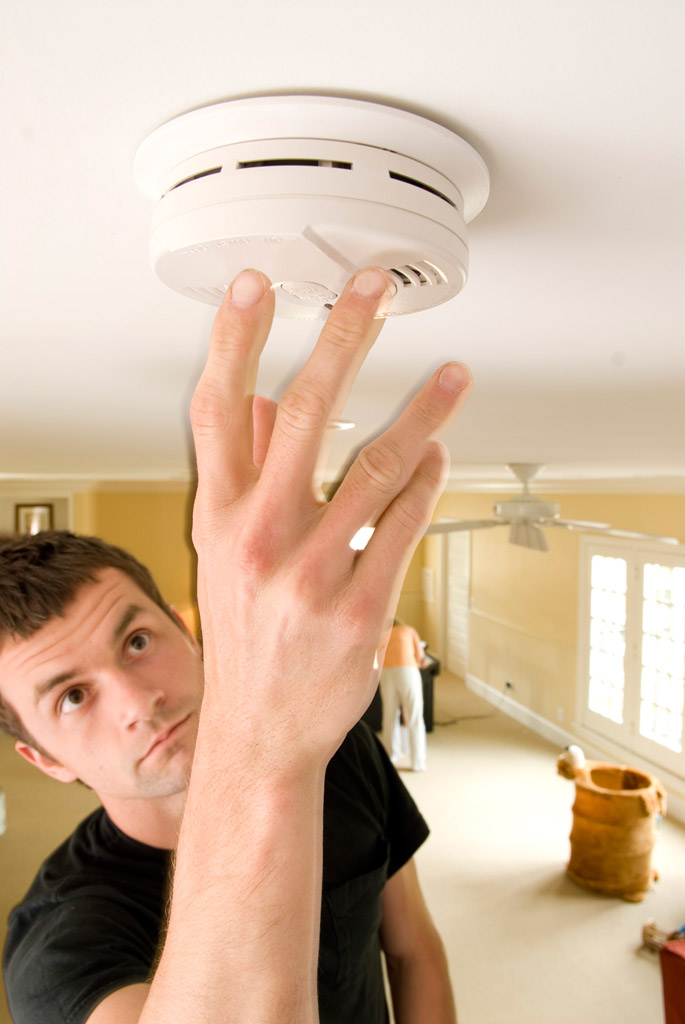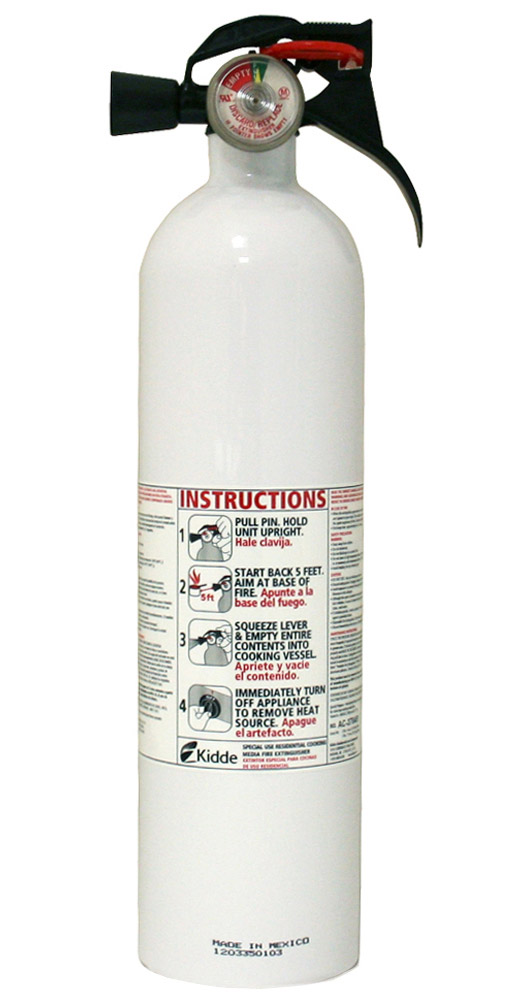Home Safety Checklist: 10 Important Reminders
Ten home safety essentials that you can check today to prevent accidents at home and protect your family and property.
Like most people, I tend to live in an “it will never happen to me” bubble, and I haven’t always been as diligent as I should be when it comes to home safety. The reality, however, is that accidents happen. To protect yourself and the ones you love, review this home safety checklist and take action to ensure that your home is as safe as possible.
1. Ensure that working smoke detectors are located throughout your home.
Although this may sound like an obvious safety precaution, according to the Consumer Product Safety Commission (CPSC), almost two-thirds of home fire deaths occur in homes that lack working smoke alarms. Heather Caldwell, marketing and communications manager with Kidde, says that smoke alarms should be installed on every floor of the home, in hallways, inside bedrooms, and outside sleeping areas. “On average, families have less than three minutes from the time the first smoke alarm sounds to escape a fire,” says Caldwell. “The sooner you hear an alarm, the better your chances of getting out.”

In addition to placing smoke alarms throughout the entire home, the National Fire Protection Agency (NFPA) recommends replacing those alarms every 10 years. A recent study by Qualtrics on behalf of Kidde revealed that millions of homes are in need of a fire safety update. “A quarter of U.S. homes built before 2002 – 17 million – have smoke alarms that are at least 10 years old,” said Caldwell. “Alarms monitor the home every minute of every day, and their lifespan is not infinite. If you don’t know how old your alarm is, you should replace it.”
Ongoing maintenance of smoke alarms is also often overlooked. Smoke alarms should be tested on a regular basis, per the manufacturer’s instructions, and batteries should be replaced as needed. In addition, each alarm should be gently vacuumed on a monthly basis to prevent dust from blocking the sensor.
If it’s time to replace your existing smoke alarms, consider upgrading to one of the latest models that features a 10-year sealed lithium battery, which provides continuous power for the life of the alarm. “With this alarm, the homeowner never has to replace the battery,” says Caldwell. “The alarm will sound an end-of-life warning, alerting the homeowner to replace the entire unit.”
2. Install carbon monoxide detectors and keep them working.
Undetectable by the senses, carbon monoxide (CO) is produced by household appliances that burn fossil fuels, such as water heaters, furnaces, dryers, space heaters, gas ovens, and fireplaces. It is also produced by auto exhaust fumes, operating a barbecue grill in a closed area, or powered outdoor equipment that is operated within close proximity to the home.
According to the Journal of the American Medical Association, carbon monoxide is the leading cause of accidental poisoning deaths in America. To protect your family from this “silent killer,” you should install CO alarms on every floor of your home and in sleeping areas. Units should be replaced every five to seven years.
3. Get a fire extinguisher for every level of your home, as well as a smaller supplemental unit in the kitchen.

The National Fire Protection Association (NFPA) recommends having at least one 2A:10B:C extinguisher on each floor of the home. To learn more about the various classes of fire extinguishers and how to choose the right extinguishers for your home, click here. Also, the adult members of your household should know how to safely operate each extinguisher.
4. If you have a pool, install barriers against drowning.
If you have small children or live in a family-oriented neighborhood, an enclosure around your pool and an alarm can prevent one of the most common causes of home injuries and fatalities. Many states require homeowners to install barriers to protect the young (and, in some states, the elderly), so be sure to research the Residential Code for your area. The ASTM has found that "the only way to prevent accidental drowning is the use of safety devices in a 'layer of protection' approach, which is advocated by all concerned drowning-prevention entities." In addition to enclosing your pool with a barrier, install a gate alarm or a pool alarm that alerts you when an object (or a person) has fallen into the water.
5. Register your appliances so that you will receive notification of recalls or safety issues.
According to a Consumer Product Safety Commission (CPSC) Report, which analyzed data from 2006 through 2008, major appliances caused more than 150,000 residential fires, resulting in 3,670 injuries, 150 deaths, and $547 million in property damage. Most home fires are attributable to electrical, mechanical, or design problems associated with ranges, dryers, air conditioners, refrigerators, and dishwashers.
It’s important to register each of your major appliances so that you receive notification in the event of a recall. Additionally, even if you have registered an appliance with the manufacturer, you still can miss important communications regarding potential safety issues. Therefore, it’s always a good idea to periodically check to make sure none of your appliances have been recalled. To view information on recalled appliances, visit the CPSC website. To report an issue or view safety complaints, visit SaferProducts.gov.
6. Install safety knobs over your stove controls.
If you have children or pets, simply installing safety knobs on your stove can prevent many injuries. A friend of mine had a recent near miss when her cat somehow managed to turn on a burner when no one was home. Fortunately, she only lost her favorite pan, rather than her whole condo. Safety knobs are usually clear, hinged covers that are durable and heat-resistant and are designed to prevent accidental burner ignition.
7. Inspect power cords on a regular basis, and unplug small appliances when they aren’t in use.
Regularly check the power cords in your home for signs of obvious fraying or damage. Don't wrap frayed spots with tape, because the tape will prevent you from noticing increasing damage and subsequent risk of electrical fire. Also, never route electric cords under carpeting, where they can cause tripping, can overheat, or can become damaged by furniture.
8. Hire a qualified electrician to assess your home’s wiring, especially if you have an older home.
Older homes may not be able to handle the demands of modern appliances, so an electrician may recommend arc-fault circuit interrupters, which detect unseen dangers caused by damaged wires and faulty appliances.
9. Clean your dryer’s lint screen regularly to avoid lint buildup.
In addition to cleaning the lint screens after every load of laundry, have your dryer ducts cleaned to ensure that lint hasn’t built up within the sags and creases. If you have flexible ducts made of foil or plastic, consider replacing them with metal ducts — Consumer Reports recommends metal ducts as least likely to harbor lint in sags and creases and more likely to contain fire if it starts.
10. Keep your street address clearly visible from the curb.
In addition to keeping vegetation trimmed, use large numbers in a prominent, well lit location on the front of your house. Even if you are diligent about home safety, accidents can still happen. In the event of an emergency, you’ll want to make sure that fire, police, or medical personnel can quickly locate your residence.

Lisa Taylor Minor
Lisa Taylor is a freelance writer and marketing consultant. She has more than 16 years of experience as a communications professional and has worked with a variety of companies in the home products and building materials industry. Originally from Memphis, TN, Lisa earned a BA in Journalism from the University of Memphis in 1995 and a MA in Journalism from the University of Memphis in 1997. She spent the first 11 years of her career working in account service for Memphis advertising agencies Thompson & Company, Oden Marketing & Design, and Carpenter/Sullivan. Lisa then spent five years in Nashville, TN, with The Buntin Group, an Adweek Top 100 U.S. advertising agency, and Louisiana-Pacific Corporation, a leading manufacturer of building materials. Lisa currently lives in Denver, CO, and is Principal/Owner of Wazee Marketing.
Website: www.wazeemarketing.com
